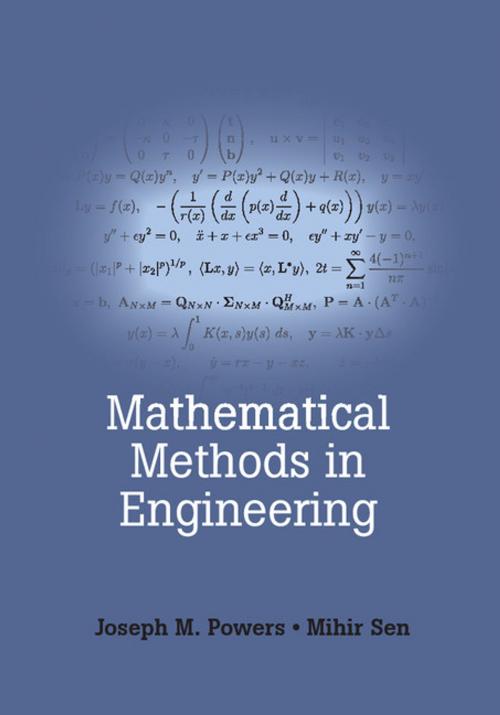Mathematical Methods in Engineering
Nonfiction, Science & Nature, Technology, Engineering, Mathematics| Author: | Joseph M. Powers, Mihir Sen | ISBN: | 9781316189061 |
| Publisher: | Cambridge University Press | Publication: | January 26, 2015 |
| Imprint: | Cambridge University Press | Language: | English |
| Author: | Joseph M. Powers, Mihir Sen |
| ISBN: | 9781316189061 |
| Publisher: | Cambridge University Press |
| Publication: | January 26, 2015 |
| Imprint: | Cambridge University Press |
| Language: | English |
This text focuses on a variety of topics in mathematics in common usage in graduate engineering programs including vector calculus, linear and nonlinear ordinary differential equations, approximation methods, vector spaces, linear algebra, integral equations and dynamical systems. The book is designed for engineering graduate students who wonder how much of their basic mathematics will be of use in practice. Following development of the underlying analysis, the book takes students through a large number of examples that have been worked in detail. Students can choose to go through each step or to skip ahead if they so desire. After seeing all the intermediate steps, they will be in a better position to know what is expected of them when solving assignments, examination problems, and when on the job. Chapters conclude with exercises for the student that reinforce the chapter content and help connect the subject matter to a variety of engineering problems. Students have grown up with computer-based tools including numerical calculations and computer graphics; the worked-out examples as well as the end-of-chapter exercises often use computers for numerical and symbolic computations and for graphical display of the results.
This text focuses on a variety of topics in mathematics in common usage in graduate engineering programs including vector calculus, linear and nonlinear ordinary differential equations, approximation methods, vector spaces, linear algebra, integral equations and dynamical systems. The book is designed for engineering graduate students who wonder how much of their basic mathematics will be of use in practice. Following development of the underlying analysis, the book takes students through a large number of examples that have been worked in detail. Students can choose to go through each step or to skip ahead if they so desire. After seeing all the intermediate steps, they will be in a better position to know what is expected of them when solving assignments, examination problems, and when on the job. Chapters conclude with exercises for the student that reinforce the chapter content and help connect the subject matter to a variety of engineering problems. Students have grown up with computer-based tools including numerical calculations and computer graphics; the worked-out examples as well as the end-of-chapter exercises often use computers for numerical and symbolic computations and for graphical display of the results.















